WAR GRAVE
OWEN B. V. McMAHON (grave 23)
SERGEANT
49 SQUADRON
ABOUT MY LIFE
Born: 1917
Died: 25th August 1941
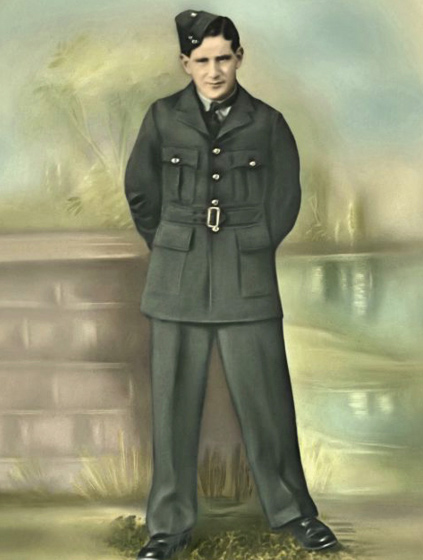
I was from Johnsonville near Wellington, New Zealand. I had been educated at the local public school before going on to study at Wellington Technical College and later Victoria University. Following my graduation, I became an instructor at the International Correspondence School in Wellington.
In late 1938, I left New Zealand to tour Britain and America, returning from New York the day before war broke out. Just three days later, I joined the RAF. I was keenly interested in all forms of sport.
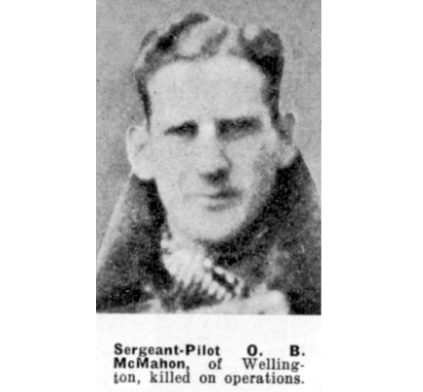
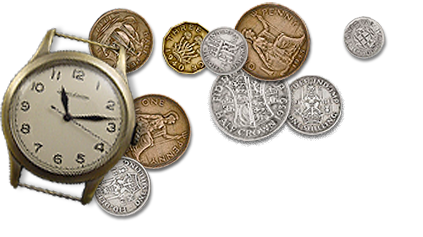
MY AIRCRAFT
On the day of the accident, I was flying a Handley Page Hampden AD967 of 49 Squadron. 49 Squadron had been the first RAF unit to receive the Hampden.
The Hampden was a medium bomber with a crew of 4. Pilot, Navigator, Wireless Operator/gunner and a further gunner. Although it was a vast improvement on the biplanes 49 Squadron had been flying just before the war opened, in reality it was already obsolete. Early daylight raids had been a disaster, the bomber was too slow to evade German fighters and its guns were no match for the Germans either. The distinctive fuselage, designed to give the aircraft a sleek, aerodynamic profile, led to the Hampden earning its nickname of “The Flying suitcase”.
Crew: 4
Span: 21.09 m
Length: 16.32 m
Height: 4.37 m
Wing area: 63.90 m²
Empty weight: 5,344 kg
Loaded weight: 8,508 kg
Engine: 2 x Bristol Pegasus XVIII 9-cylinder radial engines
Engine power: 980hp each
Maximum speed: 410 km/h
Rate of climb: 5.00 m/s
Range normal: 1,095 km
4 or 6 x 7.7mm Vickers K machine guns (1 flexible, 1 nose, 1 or 2 dorsal, 1 or 2 ventral)
1,814kg of bombs/mines or 1 x 18in torpedo

MY ROLE
I was the pilot on board this aircraft and as such, I was also the captain and would most often have been referred to as “Skipper” by the rest of the crew.
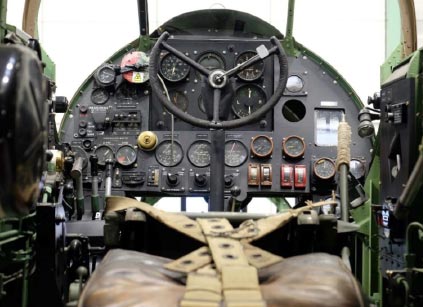
A Hampden Cockpit.
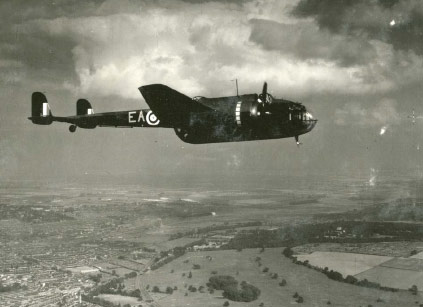
MY SQUADRON
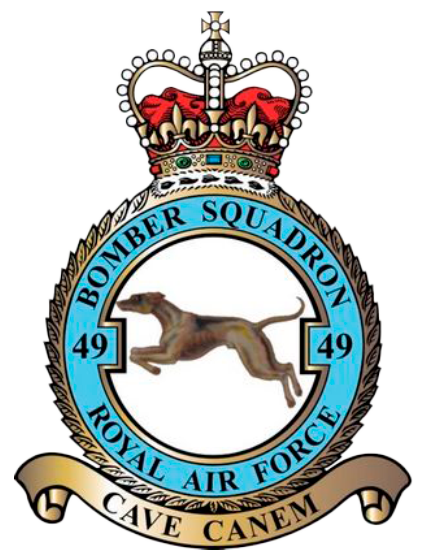
Motto: Cave Canem
Beware of the Dog
49 Squadron was formed at Dover on 15 April 1916 under the command of Major A S Barratt MC and spent its first 18 months as an aircrew training unit equipped with BE2Cs and RE7s. Other documents record that the squadron also trained using Martinsydes. In November 1917 the squadron was re equipped with DH4s and moved to La Bellevue aerodrome in France. Here the squadron was employed in the day bomber role as part of the 3rd (Army) Wing. Its first raid was made on 26 November 1917. Following the end of hostilities, the squadron was disbanded on 18 July 1919. According to its records 49 Squadron destroyed 56 enemy aircraft drove down another 63 out of control, dropped a total of 120 tons of bombs and operated from 10 airfields in France during the 1914-18 War.
On 10 February 1936, 49 Squadron re-formed at Bircham Newton from a nucleus provided by ‘C’ Flight of No 18 Squadron. It was equipped with Hawker Hind light bombers and initially commanded by Flt Lt J C Cunningham. It moved to Worthy Down in August 1936 where its official badge, depicting a racing greyhound surmounting the motto ‘Cave Canem’ (Beware of the Dog), was presented on 14 June 1937. At first the badge seems inappropriate for a bomber squadron but it is in fact indicative of the performance of the Hawker Hind when compared with its contemporaries. A move to Scampton in March 1938 was followed by conversion to the Handley Page Hampden, the first unit to be equipped with the type.
During the opening months of World War 2 the squadron was employed mainly on reconnaissance, mine laying and leaflet dropping. On 11 May 1940 bombing attacks on Germany began, the oil refineries at Munchen Gladbach being attacked. On 12 August a most successful low level attack on the Dortmund Ems canal was pressed home by Hampdens of 49 Squadron despite fierce opposition. Flt Lt R A B Learoyd received the Victoria Cross for his bravery during the attack, the first awarded in Bomber Command.
The squadron began to re equip with Manchester aircraft in April 1942; however, these aircraft were not in use for long and by July 1942 were replaced by Lancasters which, with their greater range and striking power, extended the scope of the squadron’s operations.
The Squadron stood down from 1-15 January 1943 during which time a move was made to Fiskerton. Operations resumed on 16 January when the squadron attacked Berlin the first of many such visits. For the remainder of the war the squadron continued as a front line bomber squadron and took part in most major operations by Bomber Command including, in August 1943, the vital attack on the rocket research establishment at Peenemunde when the squadron lost four of the twelve Lancasters despatched.
After moving to Fulbeck on 16 October 1944, then Syerston on 22 April 1945, the squadron made its last attack on 25 April when Berchtesgaden was the target. In May the squadron took part in Operation ‘EXODUS’ ferrying ex -prisoners of war back to the UK.
Honours and awards gained by members of 49 Squadron during the Second World War include 1 Victoria Cross, 1 Empire Gallantry Medal (later the George Cross), 7 Distinguished Service Orders, 131 Distinguished Flying Crosses, 2 Conspicuous Gallantry Medals and 105 Distinguished Flying Medals.
Following World War Two, the squadron flew Avro Lincolns and later the Vickers Valliant, the first of the V-bombers. It was in this aircraft that they would take part in the tests of Britain’s first nuclear weapons. From November 1959 the squadron reverted to the normal medium bomber role. It moved to Marham on 26 June 1961. On 5 June 1964 Her Royal Highness Princess Marina, Duchess of Kent, presented 49 Squadron with its standard, which was awarded in April.
49 Squadron was disbanded at RAF Marham on 1 May 1965, when all Valiant aircraft were withdrawn from service.
THE ACCIDENT
We had returned from a dangerous mission to bomb Dusseldorf in Germany and were within just a few minutes of landing safely. However, amongst the blackout, where Scampton should lie, the wreckage of Hampden AE223 was still burning, following the fatal explosion of a loose bomb.
Investigators never fully established the reason for our crash, but they did note that we had turned our navigation lights off. It is possible that we did this because we feared that a German intruder was the cause of the Hampden’s demise and we had no intention of becoming their second victim.
But a threat much more close to home lurked in the darkness. Possibly having had similar thoughts, 83 Squadron Hampden X3121 had also turned its navigation lights off. With no way to see each other, our two aircraft collided and fell onto Whale Jaws Farm, Hackthorn, just to the North of the airfield. All 8 of the crew were killed.
CASUALTIES – 25TH AUGUST 1941
Hampden AD967 49 Squadron
Sgt Owen Bernard McMahon (Pilot) (Buried Scampton)
Sgt Ian Donald MacKinnon (Pilot) (Buried Brookwood Military Cemetery)
Sgt Gathorne Field Upton (Air Gunner) (Buried Brandon Hill Cemetery Surrey)
Sgt Ernest Welbourne, (Wireless Operator)
Hampden X3121 83 Squadron
Flt Lt Anthony Mills DFC (Pilot) (Buried Scampton) MORE
Sgt Bernard Mason (Wireless Op/Air Gunner) (Buried Scampton) MORE
Sgt John Sommerville (Buried Largo Cemetery in Levan)
Flt Sgt Donald Sharpe (Buried Portslade Cemetery Brighton)
Where Next
Visit Sgt MacKinnon’s grave at the Brookwood Military Cemetery.
BROOKWOOD MILITARY CEMETERY is owned by the Commonwealth War Graves Commission and is the largest Commonwealth war cemetery in the United Kingdom, covering approximately 37 acres. Opened in 1917 and now contains over 5000 graves.
Brookwood is 30 miles from London (M3 to Bagshot and then A322). The main entrance to Brookwood Military Cemetery is on the A324 from the village of Pirbright. There is a direct train service from Waterloo to Brookwood Station from which there is an entrance to the cemetery.
The postcode for Brookwood is GU24 0JB.
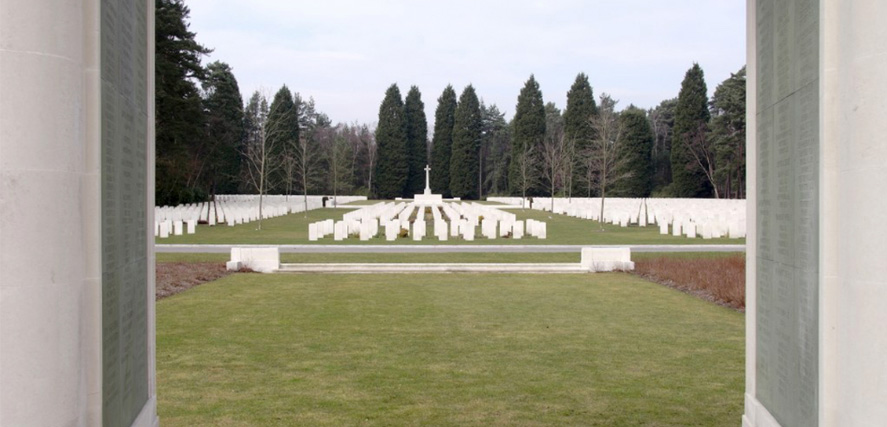
ON THIS DAY IN WORLD WAR TWO – 25TH AUGUST 1941
In Tehran, an Anglo-Russian occupation begins.
In Ratsenburg, Germany Hitler holds talks with Mussolini. Hitler rails against Spain’s refusal to enter the war on their side.
